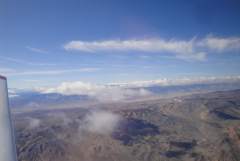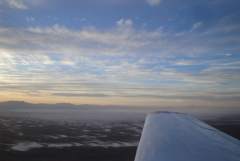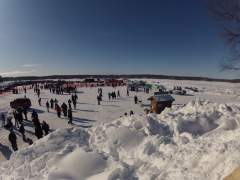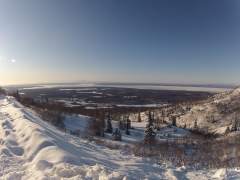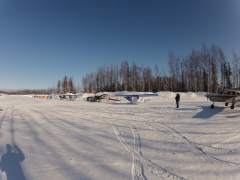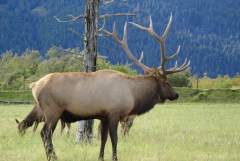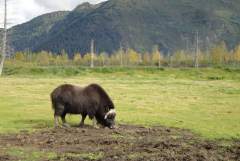
schule
Basic Member-
Posts
159 -
Joined
-
Last visited
Content Type
Profiles
Forums
Blogs
Gallery
Downloads
Media Demo
Events
Everything posted by schule
-
New glareshield for a vintage panel?
schule replied to DaV8or's topic in Vintage Mooneys (pre-J models)
Dave, The interior was installed by Bernard Peters out of Kanab UT. I don't know if he is still in the business, but he did a fine job with the interior and a dozen Lasar Speed Mods in '02 before I owned the A/C. I would send detailed pictures but 477T is currently in Portland at Advanced Aircraft. You are welcome to talk to Greg and see if he could send you some details or even use it to make a pattern for yours. I flew a C model for several hours with a standard '63 panel and glare shield. I like the additional coverage added by this custom glareshield. -Mark -
Christian, Sometimes, Maybe, It Depends. I really wanted a Rocket, but the realities of northern flying in helped me rationalize a NA Mooney. 90% of the days around here don't allow you to legally touch clouds because of that problematic known icing thing. Job has a good point about flying in the Rockies. Most all Alaska based aircraft safely crossed the Rockies to get here. I crossed them last month, but it was a standard day and not a crazy hot summer in Arizona. My problem now is waiting for warmer air to avoid icing on the long trip north. With typical stratoform northern cloud layers you will most likely be able to see and avoid all problematic weather before you climb into it as it all problematic. Good luck with your decision as both would serve you well. -Mark
-
New glareshield for a vintage panel?
schule replied to DaV8or's topic in Vintage Mooneys (pre-J models)
Dave, My '67 F has a custom made glare shield which slides in above the entire dash to the defroster vents and then snap into final position. The panel and glare shield are lit by led lights with a toggle switch on the insturment panel. The best part is all of it is NVG compatible, except for the glaring red gear up light, STEC autopilot lights, Narco radio.......oh well soon enough a midnight flight will still require sunglasses. -Mark -
Mooneydrmr, I believe you can learn in a M20, but there are valid reasons to beat up someone else's rental for a couple of hours. Scottfromiowa has a good point on wasting you own money. I would however recommend making sure you like flying prior to setting deep financial roots in it. I do believe most military pilots solo some relatively high performance (twin engine jets/turboprop singles) at around 20 hours plus simulator time. George might have some insights on Navy training. It is possible with a good training plan, but real expensive for the students who find out they do not like to fly. Good luck living your dream. -Mark
-
Factory Gauge vs Engine Monitor RPM Differences
schule replied to schule's topic in Vintage Mooneys (pre-J models)
Thanks for the pointers. I will definately give it a try. -Mark -
Any recommendations on the best method to accurately resolve the differences between a factory RPM guage and engine monitor? Is the factory guage designed to be viewed from a particular angle to be accurate? My factory RPM guage seems to read around 50-75 RPM less than a new enigne monitor. I believe the engine monitor reads off the left side Magneto, but I am not at all certain where the factory guage reads from. I would like to tune the RPM back to the 2700. The monitor reads 2670 and the factory guage is something slightly less. I don't want to be on the wrong side of legal RPM range, but a little more power will be nice to jump over the upcoming mountains. Any ideas would be appreciated. -Mark
-
From the album: #schule's album
-
From the album: #schule's album
-
The Sunday restart to our 2012 Iditarod was on of those rare winter days that help Alaskans survive. Temps were a balmy 15F but the sun made it feel like 20F. We probably had 2000+ folks streaching across Willow Lake for the restart to wish 66 teams good luck over the next 8-9 competitve racing days covering around 1000 miles to Nome. I will try to post some flying photos once I am able to have enough days without snow to make the jump from the Lower 48. -Mark
-
From the album: #schule's album
-
From the album: #schule's album
-
From the album: #schule's album
-
From the album: #schule's album
-
When Did You Buy Your First Airplane?
schule replied to MooneyMitch's topic in Miscellaneous Aviation Talk
Logging time since 1989. Unfortunately you can't get a PPL till 17 and had to wait till 1993. Joined a Mooney partnership at 32, and finally found the right one to care for outright at 35. -Mark -
Curious to see what the group thinks on this one. I am pondering spending a fair bit o' cash on upgrades to my personal aircraft, but I am also considering an experiment in getting new blood into a Mooney. Does anyone have experience in a M10? It would seem to be a simple to fly trainer that should be able to operate around $70/hr wet using a non-ethanol based autogas. Mind you Alaska does not sell ethanol, and stateside it should be easy enough to order without ethanol added with a little extra effort and saving a bit for AVGAS if not home station. I have seen the AOPA survey on what currently training students find important, but I really seems to fall short of discussing any solution to getting those just on the other side of the financial fence into flying. Up here there are sooooooooo many Cessnaites because it is all they have name recognition with. Did Mooney make a long term error, by not finding a training market? How many of you drive a brand X car because you grew up with you parents same brand X? Are airplanes different? The real question boils do to how can we both get new blood excited to fly and also hook them on the Mooney? **** Full disclosure I have a Mooney in part because it is the first airplane I flew in with my uncle around 1984. I have wanted one ever since and was finally blessed with the chance to get one.
-
A new to me F was taken apart at annual by Maxwell's and they found original insulation with some corrison on 2 tubes. The price and delay were not cheap. I first got serious about purchasing a Mooney while in Iraq 2009. There was another pilot serving on the staff who had a mid-70s pre-J and ran into over $15k in corrison repairs. The final cost was such that his love for flying the Mooney was extenguished and it was sold. He was the one who convinced me that the SB 208 inspection is very important. I did buy my plane sight unseen, but only because a lot of research and hands-on inputs by some very experienced Mooniacs reduced the risk to a point were my actual inspection of the aircraft would add no significant value. If it is a west coast bird there are several shops which could help assess the risk. There are no show stoppers only an acceptable level of financial risk you are willing to take. Good luck. -Mark
-
Borealone speaks well of the challenges facing aviators in an arctic survival situation. Having spent several nights out in an Uncle Sam required Arctic Survival School, the only think different I would recommend to consider is: Do Not stay in the aircraft, but rather write a large note saying you are in a snow cave a few feet off away and the rescuers should follow the attached string to your foot. Metal airframes are like freezer boxes, but a properly constructed snow cave can be kept around 27F/-3C with just your body heat. Be careful if you light a candle as the additional heat may start to melt your new home away from home. Such high interior temps will make a dramatic difference compared to the -???? outside. For Alaska travel please look at this for some of the legal requirements a PIC has above FAA regs as well as good information: http://dot.alaska.gov/stwdav/stwdavINFO.shtml Here is an excerpt from the site: Alaska Statute 02.35.110 Emergency Rations & Equipment requires that an airman may not make a flight inside the state with an aircraft unless emergency equipment is carried as follows: The minimum equipment during the summers months is: food for each occupant for one week; one axe or hatchet; one first aid kit; an assortment of fishing tackle such as hooks, flies, and sinkers; one knife; fire starter; one mosquito headnet for each occupant; and two signaling devices such as colored smoke bombs, pistol shells, etc. sealed in metal containers. In addition to the above, the following must be carried as minimum equipment from October 15 to April 1 of each year: one pair of snowshoes; one sleeping bag; one wool blanket for each occupant over four. A well organized trip packet on flying in Alaska and Canada can be obtained from the FAA Regional Accident Prevention Program Manager, Flight Standards Division, 222 West 7th Avenue, #14, Anchorage, Alaska, 99513-7587, phone (907) 271-5497. Here is a stroy from the summer 2010 flying season were a local tourist flight went bad and put a significant number of our Rescue personnel in danger. Even a 10 minute summertime flight can become a life or death situation............!!!!!!!!!!!! http://www.npr.org/templates/story/story.php?storyId=129183537 Hope to see some of you up here this summer. -Mark

